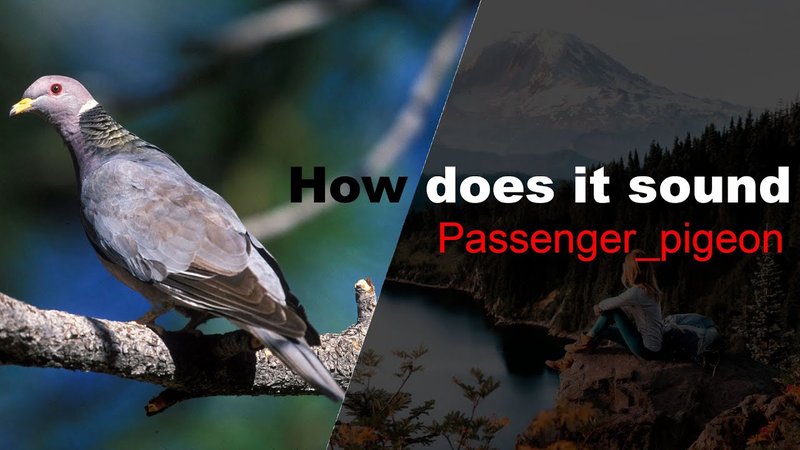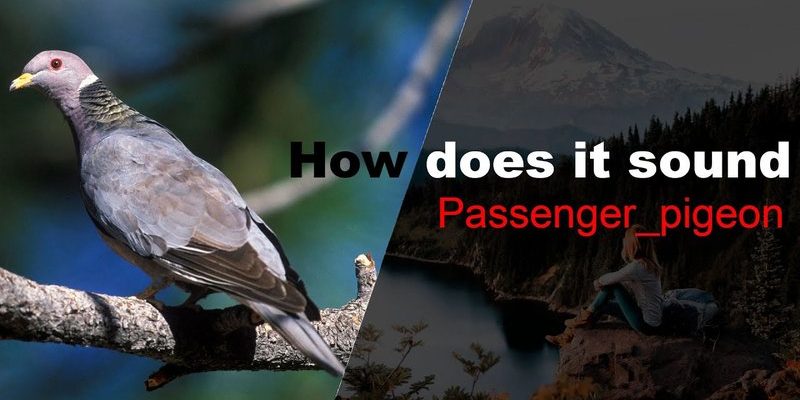
Understanding passenger pigeon vocalizations isn’t just a matter of historical curiosity, but it also helps highlight the rich tapestry of communication that exists in the natural world. Think of it like tuning into a radio station that plays the rhythms of nature. Each call serves a purpose, from alerts of danger to invitations for mating. In the following sections, we’ll dive deeper into these fascinating sounds and what they might have meant in their social structure.
The Different Types of Vocalizations
When discussing passenger pigeon vocalizations, it’s essential to recognize the variety they exhibited. Much like how humans use different tones to express joy, sadness, or urgency, passenger pigeons had a range of calls for various situations. The most common sounds included coos, barks, and whistles, each conveying distinct meanings.
- Cooing: This gentle, rhythmic sound was typically used during courtship. It served to attract potential mates and solidify bonds between pairs.
- Barking: A more abrupt and harsh sound, barking acted as a warning call. It alerted other pigeons to potential threats, like predators in the area.
- Whistling: This sound was often used during flight. When they were in flocks, it helped maintain group cohesion and had a playful quality, similar to chatting among friends.
Each type of vocalization played a vital role in the social life of passenger pigeons, allowing them to communicate effectively in their large flocks.
Understanding the Meaning Behind the Sounds
Now that we’ve covered the different vocalizations, you might be wondering what each sound truly meant in the context of the pigeons’ lives. The secret lies in understanding their social behavior and environment. Vocalizations were crucial to their survival and social interactions.
For instance, the courting coo wasn’t merely a romantic gesture; it was a way for pairs to synchronize their reproductive cycles. When you think about it, it’s pretty similar to human dating rituals, right? Just like we might go on dates to understand each other better, these coos helped partners bond before starting a family.
On the flip side, the warning barks served a practical purpose. Imagine a crowded park where sudden noises can startle everyone. The pigeons needed an efficient way to alert their massive flocks of danger. Their calls cut through the air like a siren, signaling others to be vigilant.
Lastly, the whistles in flight communicated a sense of togetherness. Picture a group of friends out for a day together, the laughter and chatter flowing freely. Those whistles helped ensure that none of the birds wandered too far from the group and stayed connected during their travels.
Vocalizations and Their Role in Social Hierarchy
The ways passenger pigeons communicated through their vocalizations also reflected their intricate social structures. Within their flocks—sometimes numbering in the millions—there were forms of hierarchy and community. Vocalizations were a way to establish and maintain this social framework.
When a dominant bird displayed vibrant vocalizations, other pigeons often responded by mimicking or altering their calls. This behavior reinforced the pecking order within the flock—just like how a boss may dictate the flow of conversation in a meeting. These vocal exchanges helped maintain peace and order, ensuring that the flock remained cohesive during foraging or flight.
Moreover, older pigeons taught younger members the nuances of these calls. It was a form of mentorship, ensuring the continuation of their cultural communication practices. Just as humans pass down traditions, passenger pigeons relied on vocalizations to foster community bonds and learned behaviors.
The Impact of Environmental Factors on Vocalizations
In examining passenger pigeon vocalizations, we can’t ignore the influence of their environment. Natural settings like forests, open fields, and the presence of water bodies all contributed to the way these birds communicated.
For instance, dense forests would have made it challenging for sounds to travel far. In such cases, you might find pigeons utilizing more distinct and pronounced vocalizations, akin to how we speak louder in a crowded room. Conversely, in open areas, their sounds could carry further, allowing them to mix softer coos and whistles in their social interactions.
Weather also played a role. On windy days, for example, the loud, abrupt barking might have been essential for ensuring that messages were received clearly amidst the rustling trees. In contrast, calm days might have encouraged softer, more melodic coos, fostering an atmosphere of peace and connection among the flock.
Reviving Passenger Pigeon Sounds Through Modern Technology
Because passenger pigeons are extinct, we can only use recorded sounds from related species to get a glimpse into what their vocalizations might have sounded like. Scientists are working on recreating their calls using advanced technology and studying the vocal patterns of their living relatives, like doves and rock pigeons.
Imagine being able to hear the echoes of the past! By analyzing frequency patterns and the contexts in which these sounds are made, researchers hope to piece together a more complete picture of how passenger pigeons communicated. It’s much like solving a mystery, where each sound is a clue leading to a better understanding of their lives.
In some educational settings, these recreated calls are used to help people connect with the past and understand the importance of conservation. By listening to these sounds, we can remind ourselves of what we’ve lost and inspire efforts to protect the few species that remain.
The Lessons of Passenger Pigeon Vocalizations
The story of the passenger pigeon and its unique vocalizations teaches us valuable lessons about communication, community, and conservation. Just as these birds had intricate ways of connecting, we, too, should strive to communicate effectively in our lives.
Moreover, their tragic extinction serves as a poignant reminder of the consequences of neglecting the natural world. Preserving habitats and protecting species ensures we don’t lose the rich vocal tapestries of our ecosystems. We can learn from the past and create a future where communication—both human and avian—thrives.
In reflecting on passenger pigeons and their sounds, we come to appreciate the depth of avian life. Each call holds a story, a connection. So next time you step outside and hear the birds singing, remember that each sound is part of a grander narrative—a reminder of the beauty and complexity of nature.
The next time you hear a bird, pause for a moment. Listen closely, and maybe you’ll hear echoes of the past, waiting to be understood.

